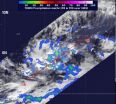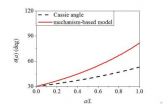(Press-News.org) Shedding light on the limits of life in extreme environments, scientists have discovered abundant and diverse metabolically active bacteria in the brine of an Antarctic lake sealed under more than 65 feet of ice.
The finding, described in this week's issue of the Proceedings of the National Academy of Sciences, is surprising because previous studies indicate that the brine has been isolated from the surface environment -- and external sources of energy -- for at least 2,800 years, according to two of the report's authors, Peter Doran and Fabien Kenig, both professors of earth and environmental sciences at the University of Illinois at Chicago.
"This provides us with new boundary conditions on the limits for life," said Doran. "The low temperature or high salinity on their own are limiting, but combined with an absence of solar energy or any new inputs from the atmosphere, they make this a very tough place to make a living."
The researchers drilled out cores of ice, using sanitary procedures and equipment. They collected samples of brine within the ice and assessed its chemical qualities and potential for sustaining life.
They found that the brine is oxygen-free, slightly acidic, and contains high levels of organic carbon, molecular hydrogen, and both oxidized and reduced compounds. The findings were unexpected because of the extremely salty, dark, cold, isolated ecosystem within the ice.
"Geochemical analyses suggest that chemical reactions between the brine and the underlying sediment generate nitrous oxide and molecular hydrogen," said Kenig. "The hydrogen may provide some of the energy needed to support microbes."
"We'd like to go back and find if there is a proper body of brine without ice down there," said Doran. "We'd also like to get some sediment cores from below that to better establish the history of the lake. In the meantime, we are using radar and other geophysical techniques to probe what lies beneath."
The research was conducted with Alison Murray and colleagues at the Desert Research Institute and scientists at other institutes.
###
Funding was provided by the National Science Foundation and NASA.
UIC ranks among the nation's leading research universities and is Chicago's largest university with 27,500 students, 12,000 faculty and staff, 15 colleges and the state's major public medical center. A hallmark of the campus is the Great Cities Commitment, through which UIC faculty, students and staff engage with community, corporate, foundation and government partners in hundreds of programs to improve the quality of life in metropolitan areas around the world.
NOTE: Please refer to the institution as the University of Illinois at Chicago on first reference and UIC on second reference. "University of Illinois" and "U. of I." are often assumed to refer to our sister campus in Urbana-Champaign.
END
You could call this "Pac-Man, the Sequel." Scientists with NASA's Cassini mission have spotted a second feature shaped like the 1980s video game icon in the Saturn system, this time on the moon Tethys. (The first was found on Mimas in 2010). The pattern appears in thermal data obtained by Cassini's composite infrared spectrometer, with warmer areas making up the Pac-Man shape.
"Finding a second Pac-Man in the Saturn system tells us that the processes creating these Pac-Men are more widespread than previously thought," said Carly Howett, the lead author of a paper recently ...
The twenty-sixth tropical cyclone of the western North Pacific Ocean season formed and has some areas of heavy rain, according to data from NASA's TRMM satellite. Tropical Depression 26W is threatening islands within Micronesia and warnings and watches are currently in effect.
Micronesia is a region in the western North Pacific Ocean made up of thousands of small islands. West of the region is the Philippines, while Indonesia is located to the southwest.
NASA's Tropical Rainfall Measuring Mission (TRMM) satellite passed over Tropical Depression 26W on Nov. 26 at 0526 ...
CHICAGO – The radiation dose to areas of the body near the breast during mammography is negligible, or very low, and does not result in an increased risk of cancer, according to a study presented today at the annual meeting of the Radiological Society of North America (RSNA). The results suggest that the use of thyroid shields during mammography is unnecessary.
"Thyroid shields can impede good mammographic quality and, therefore, are not recommended during mammography," said Alison L. Chetlen, D.O., assistant professor of radiology at Penn State Hershey Medical Center.
During ...
CHICAGO – Radiologists in Toronto have begun to identify a pattern of injuries that may be indicative of elder abuse, according to a study presented today at the annual meeting of the Radiological Society of North America (RSNA).
According to lead researcher Kieran J. Murphy, M.D., F.R.C.P.C., F.S.I.R., interim radiologist-in-chief at University Health Network in Toronto, Canada, only 2 percent of physical elder abuse is reported by clinicians.
"Unlike cases of child abuse, there is very little information available on this subject," Dr. Murphy said. "It's a much ...
CHICAGO – Researchers reviewing the records of approximately 250,000 women enrolled in an integrated healthcare delivery system found that increased CT utilization between 2000 and 2010 could result in an increase in the risk of breast cancer for certain women, including younger patients and those who received repeat exams. According to the study, which was presented today at the annual meeting of the Radiological Society of North America (RSNA), nuclear medicine examinations may also contribute to increased breast cancer risk.
CT uses ionizing radiation in the form ...
CHICAGO – A survey of women undergoing routine screening mammography found that many of them would be interested in pursuing additional screening tests if notified they had dense breast tissue, despite the possibility of false positives, invasive procedures, and out-of-pocket costs, according to a study presented today at the annual meeting of the Radiological Society of North America (RSNA).
"Our study highlights the need for patient education regarding breast density," said Jafi Lipson, M.D., assistant professor of radiology at Stanford University School of Medicine ...
CHICAGO – Researchers assessing the impact of revised guidelines for screening mammography issued by the U.S. Preventive Services Task Force (USPSTF) found evidence that the new recommendations may lead to missed cancers and a decline in screening, according to two studies presented today at the annual meeting of the Radiological Society of North America (RSNA).
Routine screening mammography has traditionally been recommended by both the USPSTF and the American Cancer Society for all women over the age of 40. In 2009, the USPSTF issued controversial new guidelines recommending ...
CHICAGO – Chemotherapy can induce changes in the brain that may affect concentration and memory, according to a study presented today at the annual meeting of the Radiological Society of North America (RSNA). Using positron emission tomography combined with computed tomography (PET/CT), researchers were able to detect physiological evidence of chemo brain, a common side effect in patients undergoing chemotherapy for cancer treatment.
"The chemo brain phenomenon is described as 'mental fog' and 'loss of coping skills' by patients who receive chemotherapy," said Rachel ...
The wetting model is a classical problem in surface science and biomimetic science. Professor LIU Jianlin and his collaborators from China University of Petroleum, Wuhan University and Fourth Military Medical University approached this old and classical problem from a new direction. They stressed that it is the triple contact line and not the contact area of the droplet/solid interface that determines the macroscopic contact angle. The proposed continuum model, termed the mechanism-based model, can illustrate the contact line pinning effect at some wedges or phase interfaces ...
New Johns Hopkins research showing a more than four-fold increase in the incidence of breast cancer in women with neurofibromatosis-1 (NF1) adds to growing evidence that women with this rare genetic disorder may benefit from early breast cancer screening with mammograms beginning at age 40, and manual breast exams as early as adolescence.
In a small study of 126 women with NF1 at the Johns Hopkins Comprehensive Neurofibromatosis Center, the Johns Hopkins scientists identified four cases of breast cancer. The study showed a four-fold increased risk for breast cancer in ...

